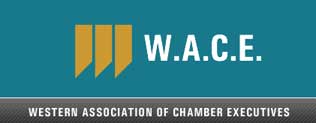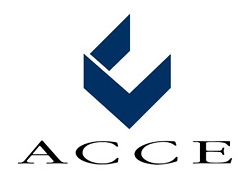If you’re a chamber pro with a lot of experience, you’ve seen all sorts of economic situations. You’ve had a good chamber board and a not supportive board. You’ve likely weathered the hard times and enjoyed the good ones.
But whether you have a lot of experience or you’re just starting out, COVID-19 has introduced situations none of us have ever dealt with. In a time like this, cultivating strong relationships is extremely important. One of the relationships that is critical to your success as a chamber professional is the relationship you have with your chamber board.

When things are going well economically it’s easy for your board to trust what you’re doing. But as the US unemployment rate hits 14% and communities are witnessing the closing of businesses at an unprecedented rate, staying on your board’s good list might be more difficult than it has been in the past.
So how do you maintain or build that relationship when most of what you’re giving them is bad news?
It’s difficult but you can do it.
Here are a few tips on how you can improve the critical relationship with your board.
Be Clear on Roles
Before we get into the things that you can do to improve and build upon your board relationship, it’s important you clearly understand the chamber board’s role and yours. When you start muddling the two, people get confused on what they have input into.
For some people, difficult times require counsel from others. It’s not a bad policy to follow.
However, seeking counsel from established community leaders is different than asking for help on every administrative decision you’re making as the chamber leader. For instance, while you may benefit from creating a COVID-19 taskforce for your chamber and community, that does not mean you should seek their input for little things like how often you should send out the member newsletter. While this example may seem comical, in some situations, especially when under pressure, some people will feel better to get input about everything.
The problem with doing that is that there is a fine line between looking for leadership assistance in an unprecedented event and asking the committee or task force to make decisions that is outside of their role.
Which brings us to…
Understand the Difference Between “Communication” and “Decision-making”
One of the most critical things you can do to established or improve a relationship with your board is to communicate with them and keep them up-to-date.
Keeping them up-to-date through solid, consistent communication is different than asking them to get involved in your decisions. There are times where they need to be pulled in and there are times when your decision is sufficient and you simply need to communicate the decision and outcomes to them.
Your board should be making strategic decisions for the chamber at a very high level in terms of strategic plans and end goals. You should be handling the day to day.

Most of what occurs in the COVID decision-making process will put you in the decision seat. You’ll need to involve the board in issues with the budget and revenue but if you want to build your relationship, you’ll stay in communication with them on other matters.
Here is a list of some things that your chamber board needs to be made aware of.
If they don’t ask you on their own, you should be sharing it with them. They should know things like:
- member retention rates and how they compare to budget projections
- dropped members, both numbers and names of businesses
- Projected revenue in the short-run (0-90 days)
- Your advocacy efforts and what’s being talked about among local, state, and federal leaders
- grants you are applying for as well as funding opportunities for you or your members
- what non-dues revenue streams are available, what programs will you launch and what are the projected results
- How you are managing your remote team and its productivity. It’s not so much that the board needs to be involved in how you do this. In fact, overseeing staff is completely up to you. However, it builds trust with the board when you give them periodic updates as to what the staff is doing and how you’re managing their time and input. This kind of information can be critical to them making the decision of how long to keep staff working before furloughing them if it comes to that.
Your board is likely comprised of seasoned business veterans. Because of this they probably have a lot of good insight that can help. It’s also important to get their buy-in in certain areas because people who give their advice often feel invested in the outcomes so it’s a good way to garner support.
Deciding between when to communicate your decision and when to seek their advice is a complex decision that should be handled consistently and strategically.
Areas Where Board Input Is Required
Reports are a good start but there are some areas where you need guidance and conversation.
Spend some time getting the board’s input in the following ways/areas:
- Chamber goals measured against the new reality. For the past several months we’ve been living in a “let’s wait and see” environment because none of us knew the direction this virus would take. However, when it comes to your board and maintaining their trust you don’t want to surprise them in critical areas like the budget. If you’re seeing a shortfall in membership with a lot of businesses considering closing, you want to bring it to their attention sooner rather than later. Having difficult conversations while there are still options will help them trust you more than if you wait until the last minute to share bad news. It also gives you and the board a chance to brainstorm ideas while they can make a difference.
- Different scenarios. No one knows how long the virus and mandatory closures will last. Because of this, it’s essential that any reopening plan contains at least two scenarios: one with social distancing, one without. Talk with your board about what each looks like in the future of your chamber. At some point, you’ll be able to begin planning next year’s events. Again, you will have to make decisions based on scenarios involving both sides
- Community pulse. Your board members may bring a different set of connections to their role than the community members you normally interact with closely. Because of this, ask your board members what they’re hearing. Ask them to take the pulse of their peers. This is a time for frank conversations. It’s important to know what’s on the minds of business people throughout the community.
- Operational expenses like salary. Your board will need to weigh in on operational expenses like salaries. Will it be necessary to furlough employees or cut back on hours? It’s important to have these tough discussions early and often as things change quickly. If you haven’t done so already, it’s probably worth drawing a line at which point those discussions become mandatory.

Other Ways to Build Trust
- Come to them with solutions. If you do have a problem and the decision is theirs, present solutions along with any information you might have from comparable sources. For instance, if you are suggesting pivoting to offering more online classes to offset the money you’re not getting from events, share with your board what other chambers that’ve implemented similar programs are experiencing.
- Show both sides. Continuing on the example above, make sure you share examples from both sides, pros and cons. Doing so and showing where something is working and not working will also help your board trust you.
- Report on wins and losses. No one wants to feel like a failure. When things are bad economically, it’s easy to feel like there was something more you could have done. But that is likely not the case. Don’t hide your failures under complicated reports or excuses. Nobody has all the answers during this time. There’s going to be some trial and error. If your board understands your decision-making process, it will help improve your relationship even if the ultimate outcome doesn’t produce the results you wanted.
- Show agility, not franticness. During times like this, where things are constantly evolving, it’s important to remain agile and flexible to be able to ride the trends or change something that’s not working. However, if you spend too much time trying things without enough time seeing if they worked or making deliberate decisions based on success or failure, you will appear frantic, not agile. You want your board to understand the logic behind your decision-making. You don’t want to be perceived as erratic or reactive. Sharing your methods, research, and ideology is critical to maintaining trust and confidence.
Like any good relationship, your relationship with your board is one that is built on trust. Your board needs to be able to trust your abilities and intentions. You can’t simply ask someone to trust you and expect that they will. You have to show them on a continuous basis that you are trustworthy. The easiest way to do that is through communicating openly with them and asking for their opinions when it makes sense and is most effective.
COVID-19 has produced some challenging times for chamber professionals but with open communication between you and your board you should be able to attain a very productive working relationship.

